According to Gartner’s report, 38% of the US enterprises are already using DevOps. A long time ago, not so far, DevOps was a fictitious thing from Silicon Valley with Facebook, Netflix, and Google. If we talk about the past few years, many more companies have adopted DevOps practices and transformed from within the organization, and automated more.
The term “DevOps” is used collectively for fundamental techniques in big IT operations teams to make workflow more comfortable and efficient. A DevOps approach facilitates collaboration between the two groups where they work together and bring the operations team into the picture to incorporate continuous integration and continuous delivery.
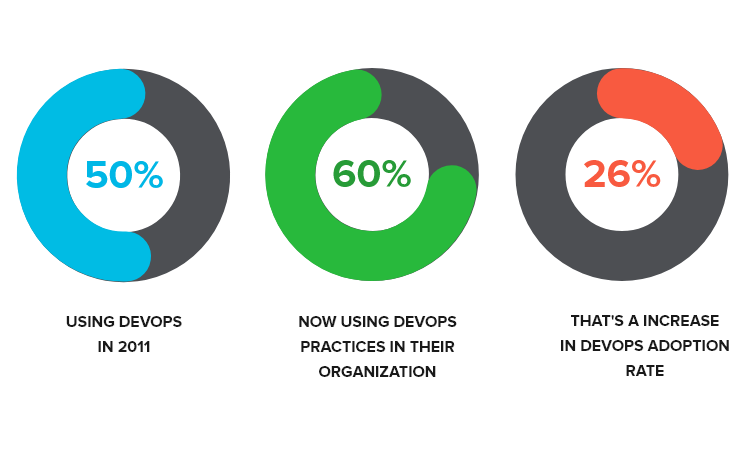
Since numerous IT organizations don’t have faith in it or presently can’t seem to apply it effectively, but on the other hand, organizations seeking to respond more efficiently to their business challenges have started practicing DevOps, and many organizations are all set to accept this methodology.
One of the fascinating parts of DevOps development is how it makes the perfect mix of old concepts, traditional frameworks with all the new ideas of DevOps automation, scaling, and improvement.
Moreover, it is a typical concern that DevOps is supplanting the conventional methods of working, particularly about IT projects. The DevOps team is progressively agile. Agile lithe, as they don’t generally manage with a task like it being controlled by a traditional team cycle or constraints. DevOps helps in decreasing asset costs and the requirement for exorbitant management systems like a single-source management framework.
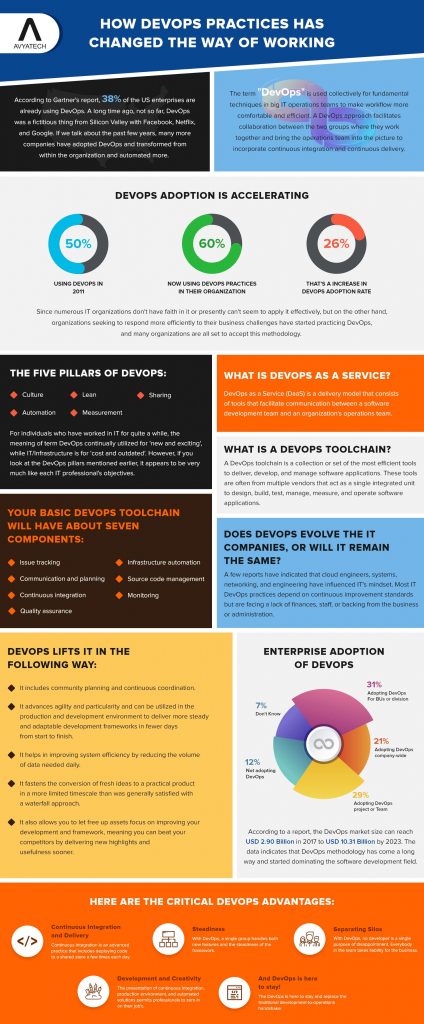
The Five Pillars of DevOps:
- Culture
- Automation
- Lean
- Measurement
- Sharing
For individuals who have worked in IT for quite a while, the meaning of term DevOps continually utilized for ‘new and exciting’, while IT/Infrastructure is for ‘cost and outdated’. However, if you look at the DevOps pillars mentioned earlier, it appears to be very much like each IT professional’s objectives.
Note that DevOps is a way of thinking, not an engineering tool. That is the reason many people don’t understand it by the same token. DevOps is an alignment between development and IT operations that automate software development processes to help organizations build, test, release, and manage workloads. Now, you have enough idea of what exactly is DevOps. Let’s move to the role of DevOps in IT.
What is DevOps as a Service?
DevOps as a Service (DaaS) is a delivery model that consists of tools that facilitate communication between a software development team and an organization’s operations team. Most IT and app development companies have already adopted DevOps as a service to use a wide range of DevOps practices. Big companies like Amazon, Netflix, NASA, etc., are already using DevOps practices.
What Is a DevOps Toolchain?
A DevOps toolchain is a collection or set of the most efficient tools to deliver, develop, and manage software applications. These tools are often from multiple vendors that act as a single integrated unit to design, build, test, manage, measure, and operate software applications. Organizations use DevOps toolchains because they automate much manual work that the developers used to do manually.
Your basic DevOps toolchain will have about seven components:
- Issue tracking
- Infrastructure automation
- Communication and planning
- Source code management
- Continuous integration
- Monitoring
- Quality assurance
Does DevOps evolve the IT companies, or will it remain the same?
A few reports have indicated that cloud engineers, systems, networking, and engineering have influenced IT’s mindset. Most IT DevOps practices depend on continuous improvement standards but are facing a lack of finances, staff, or backing from the business or administration. However, DevOps standards can acquire new thoughts and encourage learning new ideas if applied to IT.
It opens up the door for doing new practices in untapped areas. An emphasis on the DevOps method has considered an immense improvement of the mindset of IT, particularly during those crucial times when an organization is continually growing and competing in a technology-driven landscape.
DevOps lifts IT in the following way:
- It includes community planning and continuous coordination.
- DevOps advances agility and particularity and can be utilized in the production and development environment to deliver more steady and adaptable development frameworks in fewer days from start to finish.
- It helps in improving system efficiency by reducing the volume of data needed daily.
- DevOps fastens the conversion of fresh ideas to a practical product in a more limited timescale than was generally satisfied with a waterfall approach.
- It also allows you to let free up assets focus on improving your development and framework, meaning you can beat your competitors by delivering new highlights and usefulness sooner.
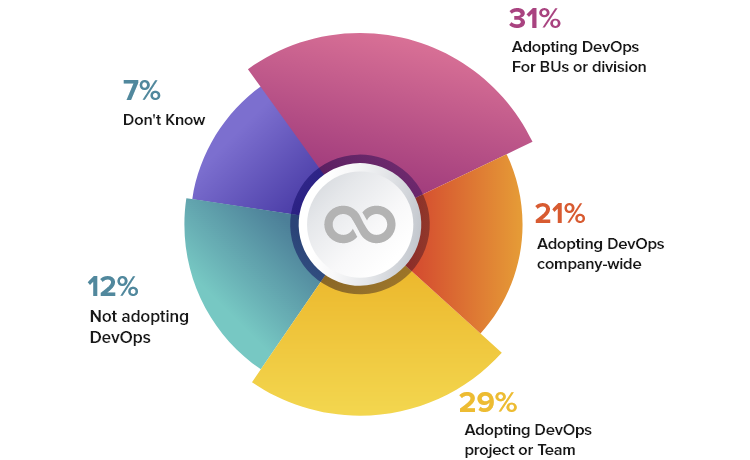
According to a report, the DevOps market size can reach USD 2.90 Billion in 2017 to USD 10.31 Billion by 2023. The data indicates that DevOps methodology has come a long way and started dominating the software development field. DevOps is a complementary method with agile. DevOps is a method to make the lives of development and operations teams easier through faster delivery of features, supporting iterative development, modular programming, and facilitating communication between development and operations teams.
Here are the critical DevOps advantages:
Continuous Integration and Delivery
Continuous integration is an advanced practice that includes deploying code to a shared store a few times each day. Utilizing an automated build measure in the mix with automated testing helps verify each check-in, which delivers more steady software.
Regular, continuous integration tools and administrations like CruiseControl, Jenkins, and Codeship allow developers to share their source control frameworks into them to perform automated testing of code. This entire process helps spot issues prior, allowing them to execute fixes sooner.
Steadiness
With DevOps, a single group handles both new features and the steadiness of the framework. Each team member takes responsibility for business objectives, which is one of DevOps’ most essential business benefits.
Separating Silos
With DevOps, no developer is a single purpose of disappointment. Everybody in the team takes liability for the business objectives, and as a result of DevOps’ intimate community nature, team members can handle different difficulties in different regions of operation and development. This methodology is of enormous advantage to an organization. It empowers teams to finish tasks rapidly and effectively while keeping up steadiness and quality.
Development and Creativity
The presentation of continuous integration, production environment, and automated solutions permits professionals to zero in on their job’s more innovative and creative side. Additional time and assets spent on experimentation and development help team members create and deliver improved software, which straightforwardly converts into accomplishing business goals.
The environment and culture that DevOps creates and sustains is one that supports a deeper understanding and usage of best practices.
And DevOps is here to stay!
The DevOps is here to stay and replace the traditional development-to-operations handshake. More and more organizations are practicing DevOps, and it will keep on increasing. It is slowly becoming significant and mandatory for all types and sizes of organizations. You might say that DevOps’ future can be seen as a cultural shift and bringing disconnected components in the dev, deployment, and delivery of products.
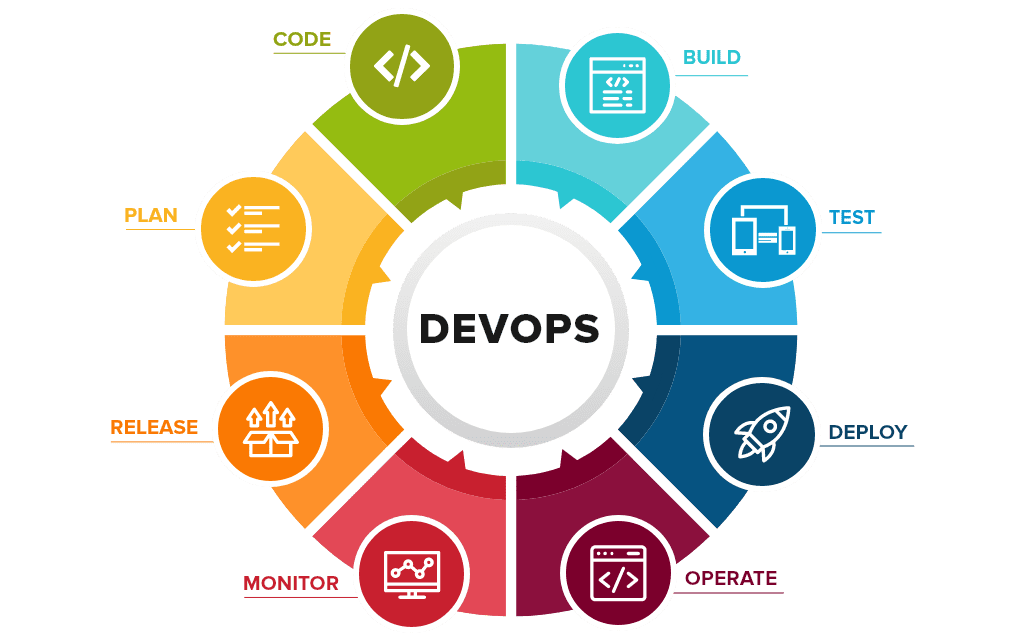


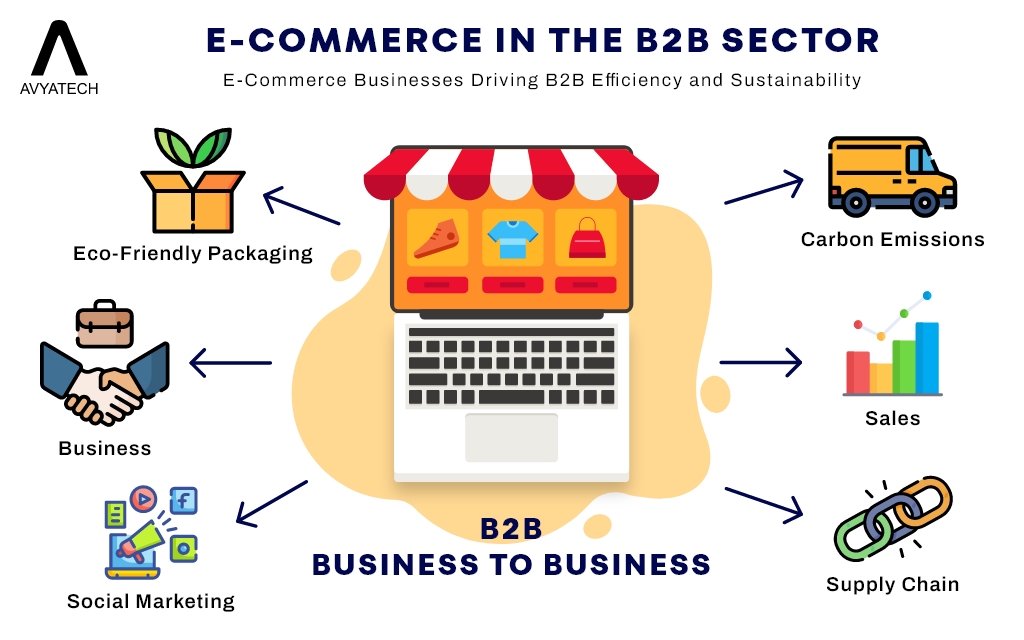

Leave a Reply